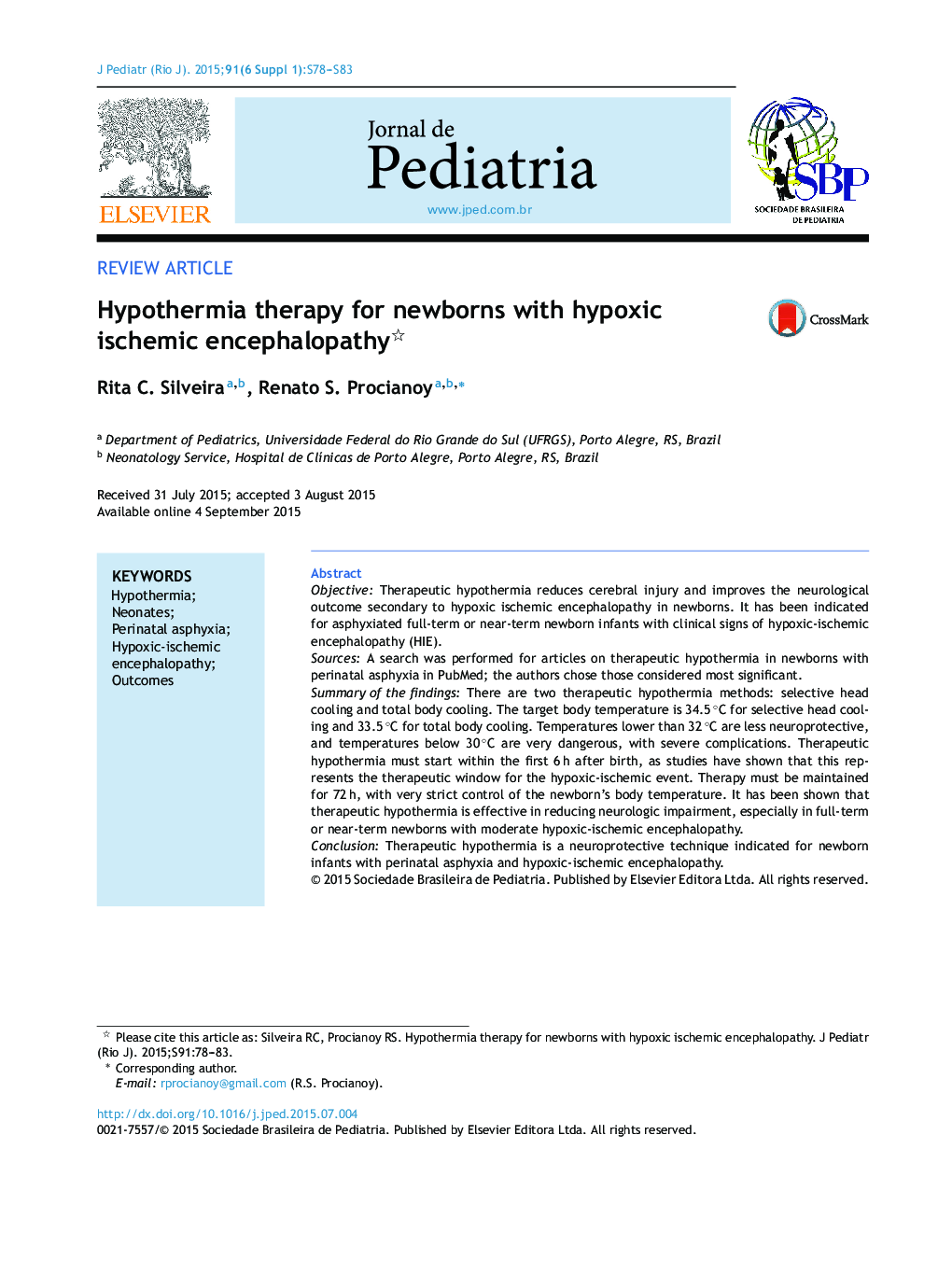| کد مقاله | کد نشریه | سال انتشار | مقاله انگلیسی | نسخه تمام متن |
|---|---|---|---|---|
| 4153960 | 1273684 | 2015 | 6 صفحه PDF | دانلود رایگان |

ObjectiveTherapeutic hypothermia reduces cerebral injury and improves the neurological outcome secondary to hypoxic ischemic encephalopathy in newborns. It has been indicated for asphyxiated full-term or near-term newborn infants with clinical signs of hypoxic-ischemic encephalopathy (HIE).SourcesA search was performed for articles on therapeutic hypothermia in newborns with perinatal asphyxia in PubMed; the authors chose those considered most significant.Summary of the findingsThere are two therapeutic hypothermia methods: selective head cooling and total body cooling. The target body temperature is 34.5 °C for selective head cooling and 33.5 °C for total body cooling. Temperatures lower than 32 °C are less neuroprotective, and temperatures below 30 °C are very dangerous, with severe complications. Therapeutic hypothermia must start within the first 6 h after birth, as studies have shown that this represents the therapeutic window for the hypoxic-ischemic event. Therapy must be maintained for 72 h, with very strict control of the newborn's body temperature. It has been shown that therapeutic hypothermia is effective in reducing neurologic impairment, especially in full-term or near-term newborns with moderate hypoxic-ischemic encephalopathy.ConclusionTherapeutic hypothermia is a neuroprotective technique indicated for newborn infants with perinatal asphyxia and hypoxic-ischemic encephalopathy.
ResumoObjetivoA hipotermia terapêutica reduz a lesão cerebral e melhora o desfecho neurológico de recém-nascidos após insulto hipóxico isquemico. Indicada para recém-nascidos a termo ou próximo do termo com evidência de asfixia perinatal e Encefalopatia Hipóxico Isquemica (EHI).Fontes dos dadosFoi feita uma procura no PubMed por publicações sobre hipotermia terapêutica em recém-nascidos com asfixia perinatal e selecionadas aquelas julgadas mais relevantes pelos autores.Síntese dos dadosHá duas técnicas de resfriamento corpórea: hipotermia seletiva da cabeça e hipotermia corpórea total. A temperatura de resfriamento deve ser 34,5 °C para seletiva de cabeça e 33,5 °C para corpórea total; temperaturas inferiores a 32 °C são menos neuroprotetoras e abaixo de 30 °C há efeitos adversos sistêmicos graves. Indica-se o início da hipotermia terapêutica até 6 horas após o nascimento, pois estudos evidenciaram que esta é a janela terapêutica da agressão hipóxico e isquêmica. A hipotermia deve ser mantida por 72 horas com rigorosa monitorização da temperatura corporal do recém-nascido. A hipotermia tem sido efetiva em reduzir seqüelas neurológicas, principalmente em recém-nascidos de termo ou próximo do termo com encefalopatia hipóxico isquêmica moderada e em melhorar o prognóstico em longo prazo dos recém-nascidos com EHI.ConclusãoA hipotermia terapêutica é uma técnica neuroprotetora indicada para recém-nascidos com asfixia perinatal.
Journal: Jornal de Pediatria - Volume 91, Issue 6, Supplement 1, November–December 2015, Pages S78–S83